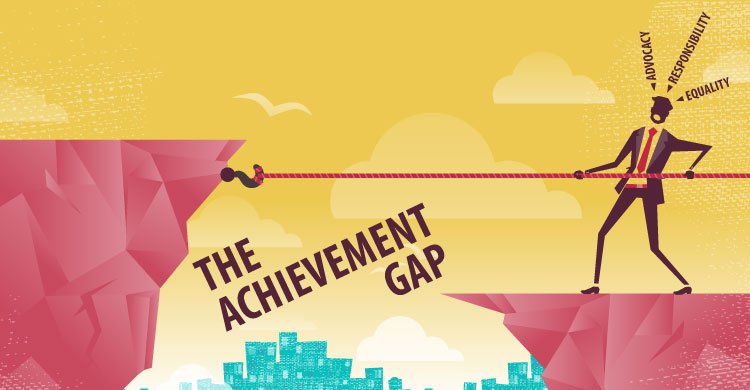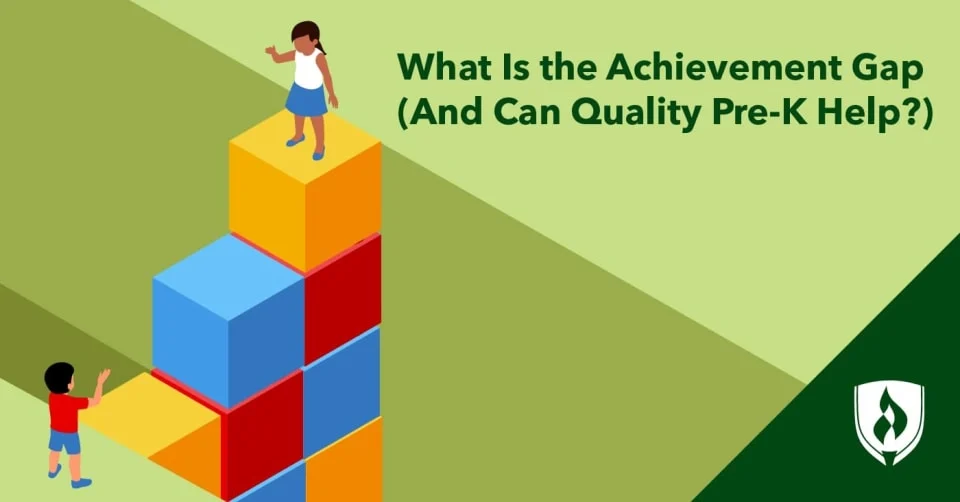The achievement gap refers to the persistent disparity in academic performance between different groups of students. These gaps often appear in standardized test scores, graduation rates, college readiness, and overall educational outcomes. The most common factors influencing achievement gaps include race, ethnicity, socioeconomic status, gender, disability, and English language proficiency.
Closing the achievement gap is crucial for educational equity and long-term societal success. By identifying the root causes and implementing targeted solutions, schools and policymakers can create a fairer and more inclusive education system.
In this guide, we will explore:

- What is the achievement gap, and why does it matter?
- The major causes of educational disparities.
- How achievement gaps affect students and communities.
- Strategies for closing the achievement gap.
- Examples of successful initiatives improving educational equity.
What is the Achievement Gap?
The achievement gap is the measurable difference in academic performance between student groups. It is often analyzed based on:
- Race/Ethnicity – White and Asian students tend to outperform Black, Hispanic, and Indigenous students on standardized tests.
- Socioeconomic Status (SES) – Students from low-income backgrounds often have lower test scores and graduation rates compared to wealthier peers.
- English Language Learners (ELLs) – Students who are not native English speakers face additional challenges in reading and writing.
- Students with Disabilities – Special education students often score lower on assessments due to accessibility and resource limitations.
- Gender – While girls outperform boys in reading, boys tend to do better in math and science in some regions.
📌 Example: In the United States, Black and Hispanic students score, on average, 20-30 points lower than White and Asian students in reading and math assessments (NAEP – National Assessment of Educational Progress).
Causes of the Achievement Gap
1️⃣ Socioeconomic Inequality & Access to Resources
- Lower-income students often lack access to quality early childhood education, books, and technology.
- Schools in low-income areas tend to have less funding, larger class sizes, and fewer experienced teachers.
- Families struggling financially may not have time for academic support at home.
📌 Example: Wealthier students are more likely to have tutors, extracurricular activities, and SAT prep courses, giving them an advantage over low-income peers.
2️⃣ School Funding Disparities
- Schools rely heavily on local property taxes, meaning wealthier communities have better-funded schools.
- Underfunded schools struggle with outdated textbooks, fewer advanced placement (AP) courses, and inadequate technology.
📌 Example: In the U.S., per-student spending ranges from $7,000 in low-income districts to over $30,000 in affluent areas.
3️⃣ Teacher Quality & Retention
- High-poverty schools have a higher teacher turnover rate, leading to less instructional consistency.
- Experienced teachers prefer well-funded schools with better pay and resources.
- Lack of teacher diversity can make it harder for students of color to connect with role models in education.
📌 Example: A study found that students with highly effective teachers for three consecutive years scored significantly higher than those with ineffective teachers.
4️⃣ Early Childhood Education Gaps
- Many low-income families lack access to high-quality preschool programs, leading to vocabulary gaps by kindergarten.
- Early learning experiences significantly impact literacy and numeracy development.
📌 Example: By age 5, children from wealthier families hear 30 million more words than low-income children, impacting early literacy.
5️⃣ Cultural & Linguistic Barriers
✔ English Language Learners (ELLs) face additional struggles in reading comprehension and standardized testing.
✔ Culturally biased assessments can disadvantage students from non-Western backgrounds.
Example: Standardized tests in the U.S. often do not account for bilingual students, leading to artificially lower scores.
How Achievement Gaps Impact Students & Society
📉 Lower Graduation & College Enrollment Rates
✔ Students in underserved schools are less likely to graduate high school and attend college.
✔ College affordability issues exacerbate the gap, as low-income students struggle with tuition costs.
Example: In the U.S., only 14% of low-income students earn a bachelor’s degree by age 24, compared to 60% of high-income students.
💰 Economic Inequality & Job Opportunities
✔ Lower academic achievement translates to fewer job prospects and lower lifetime earnings.
✔ This cycle of poverty and limited access to education continues across generations.
Example: College graduates earn on average $1 million more over a lifetime than those with only a high school diploma.
⚖️ Criminal Justice System & School-to-Prison Pipeline
✔ Students from underfunded schools face harsher disciplinary policies, leading to higher dropout rates.
✔ Black and Latino students are disproportionately suspended or expelled, increasing their chances of involvement in the justice system.
Example: 70% of incarcerated adults in the U.S. did not complete high school.
Strategies to Close the Achievement Gap
✅ 1. Equitable School Funding
✔ Increase federal and state funding for underfunded schools.
✔ Implement weighted funding formulas, giving more resources to low-income, ELL, and special education students.
Example: California’s Local Control Funding Formula (LCFF) gives extra funds to schools with disadvantaged students.
✅ 2. Expanding Early Childhood Education
✔ Invest in universal pre-K programs to close early learning gaps.
✔ Provide home literacy programs to low-income families.
Example: Head Start Programs have been shown to significantly improve kindergarten readiness for disadvantaged students.
✅ 3. Recruiting & Retaining High-Quality Teachers
✔ Offer higher salaries, mentorship programs, and professional development to teachers in low-income schools.
✔ Increase teacher diversity to better reflect student demographics.
Example: Programs like Teach for America (TFA) place highly trained teachers in high-need communities knowledge.
✅ 4. Culturally Responsive Teaching
✔ Incorporate diverse perspectives and multilingual support in curricula.
✔ Adapt lesson plans to better engage students from different backgrounds.
Example: Schools in New York City & California now integrate ethnic studies into the curriculum to increase engagement and representation.
✅ 5. Improving Access to Technology & Tutoring
✔ Provide free laptops, Wi-Fi, and digital learning tools for low-income students.
✔ Expand after-school tutoring and mentorship programs.
Example: The “One Laptop Per Child” initiative provides low-cost computers to underserved students worldwide.
Case Studies: Success Stories in Closing the Gap
Finland’s Education System 🇫🇮
- No private schools—all students receive equal funding.
- Highly trained teachers with competitive salaries.
- Minimal standardized testing, focusing on creativity and problem-solving.



